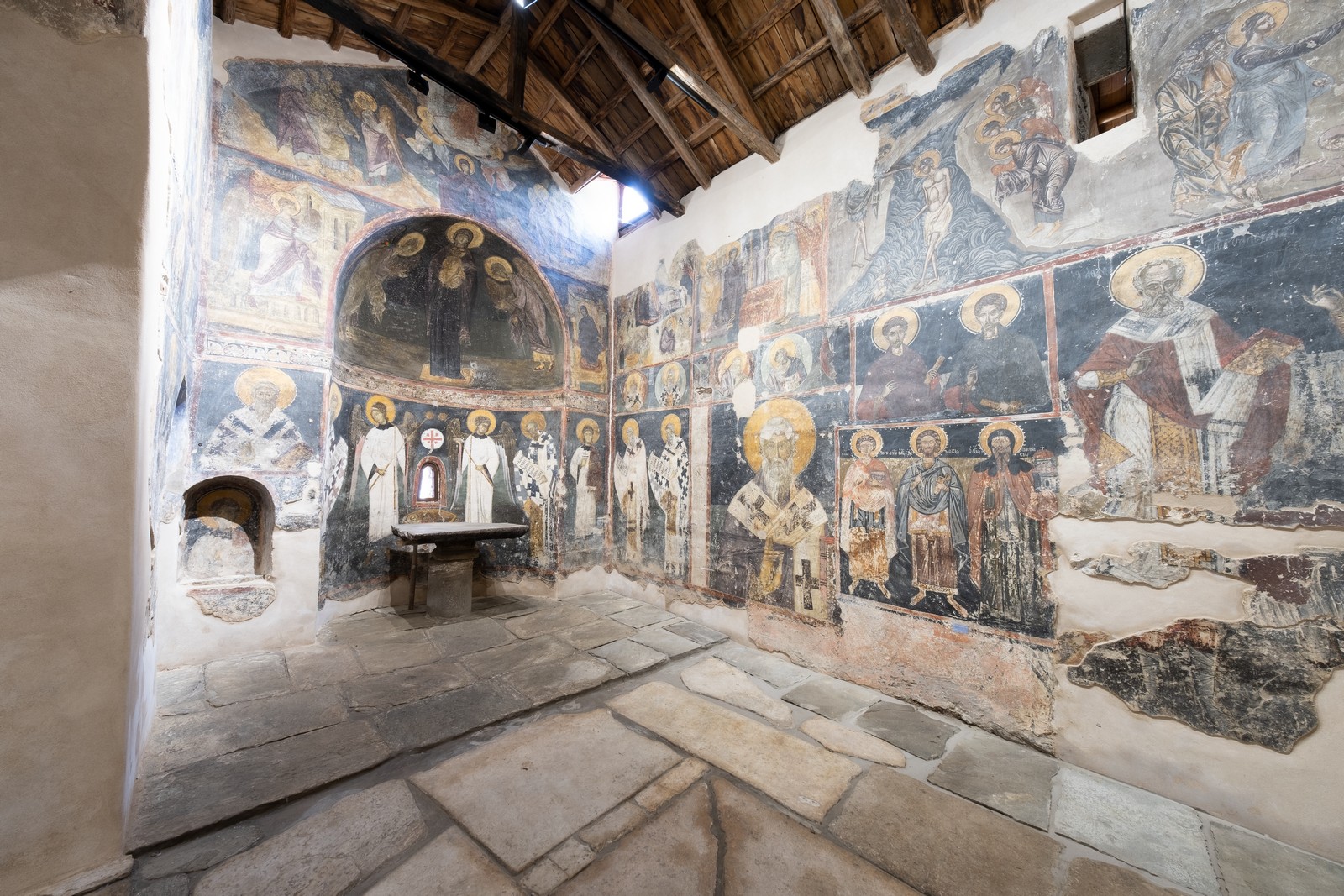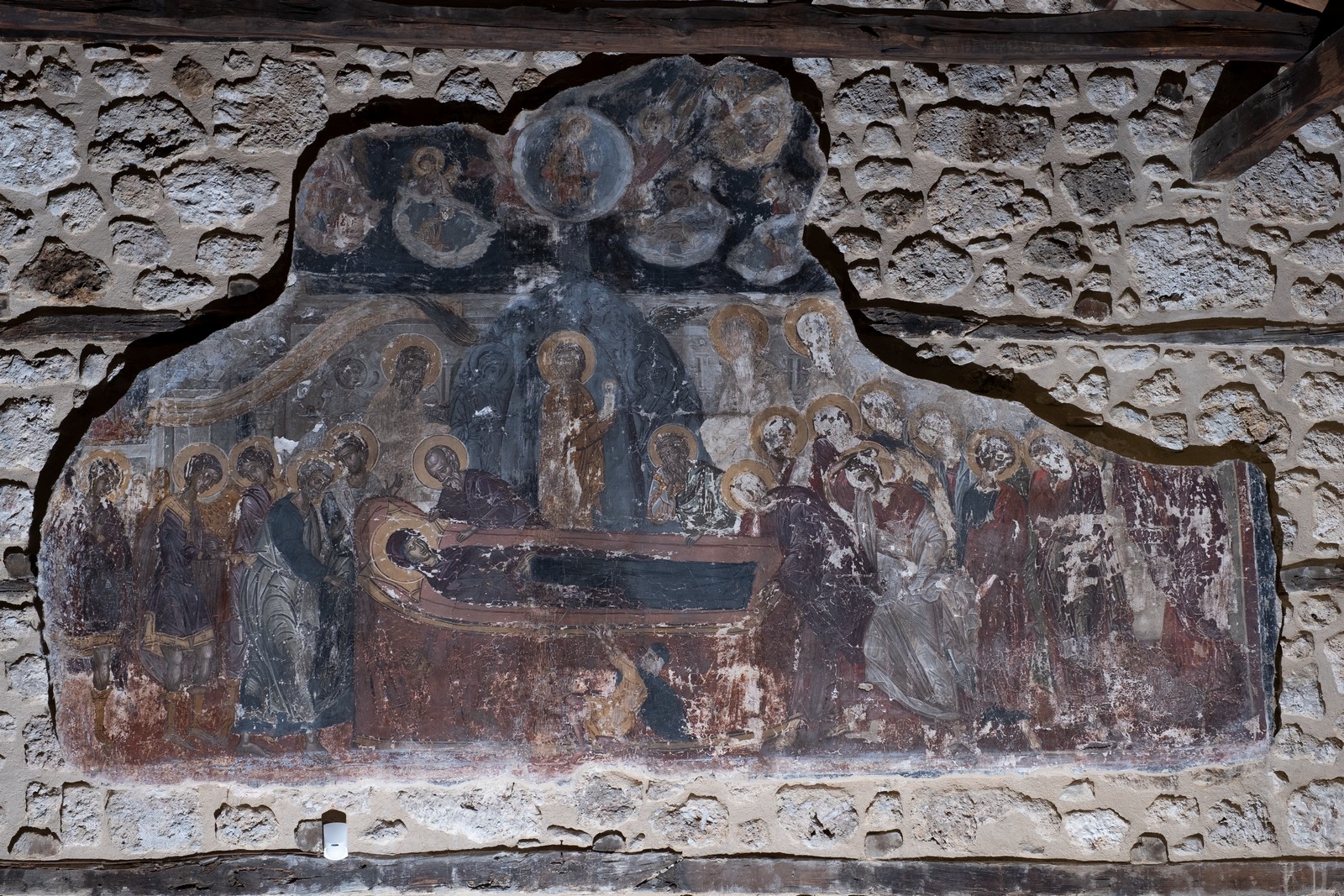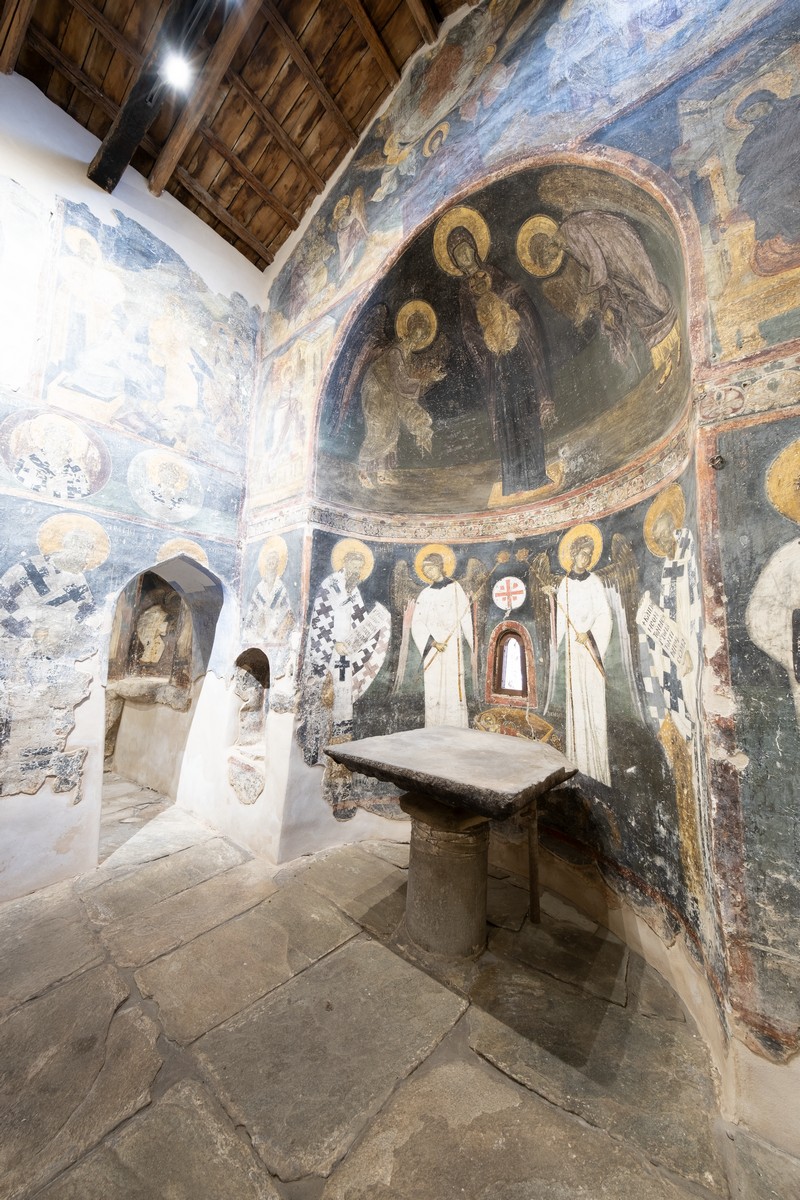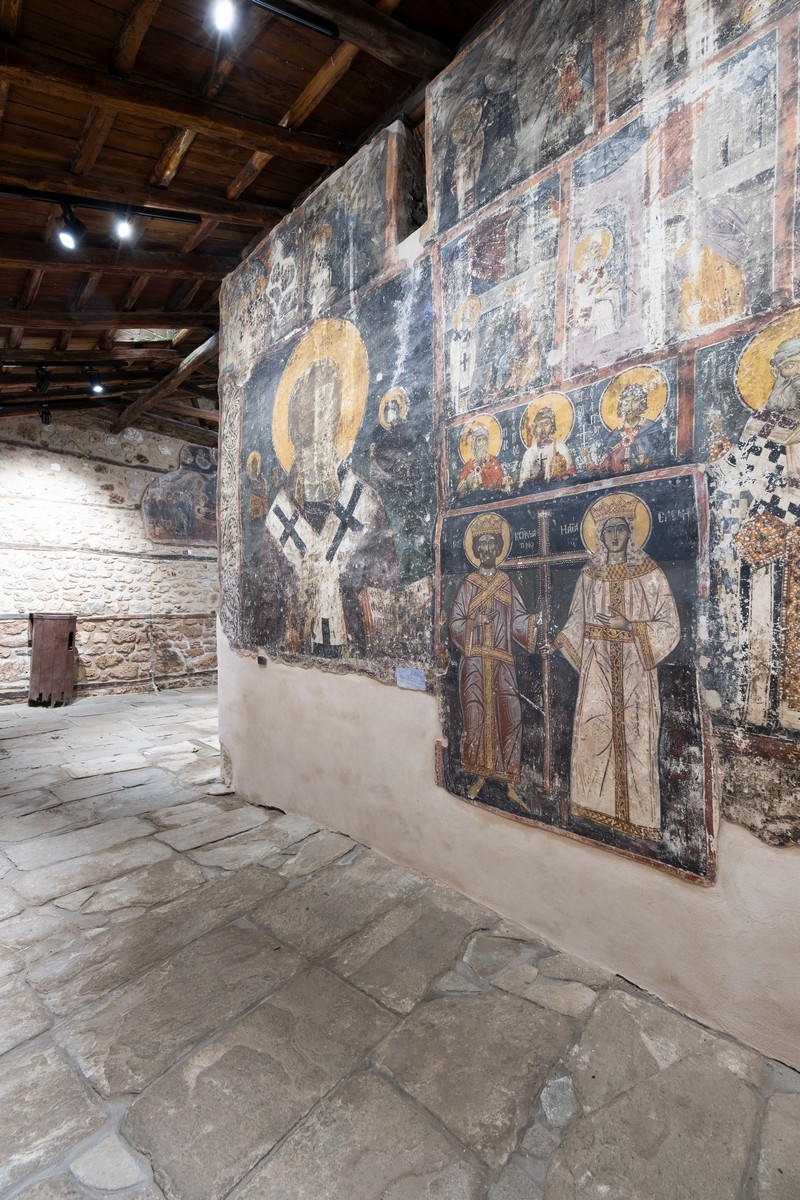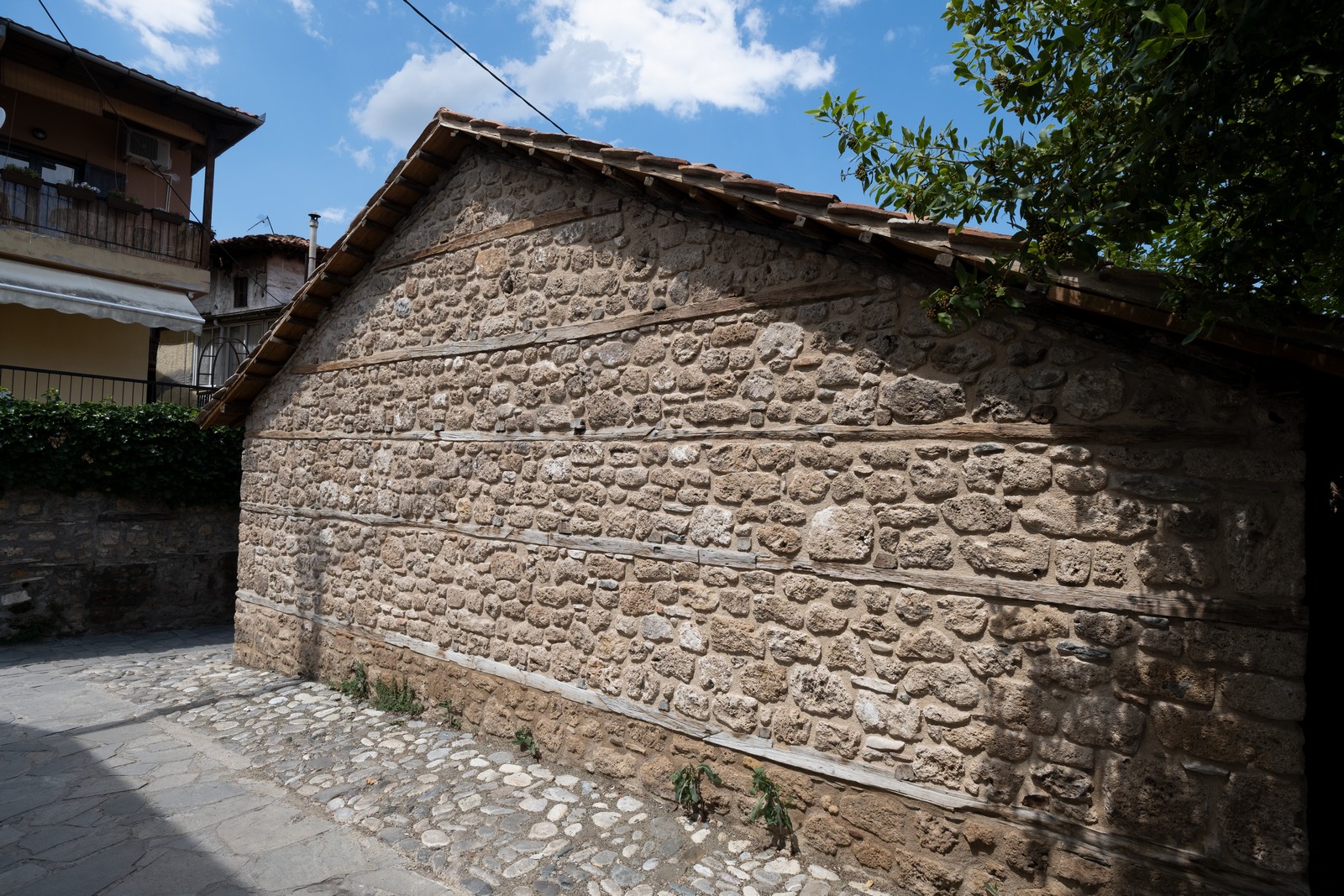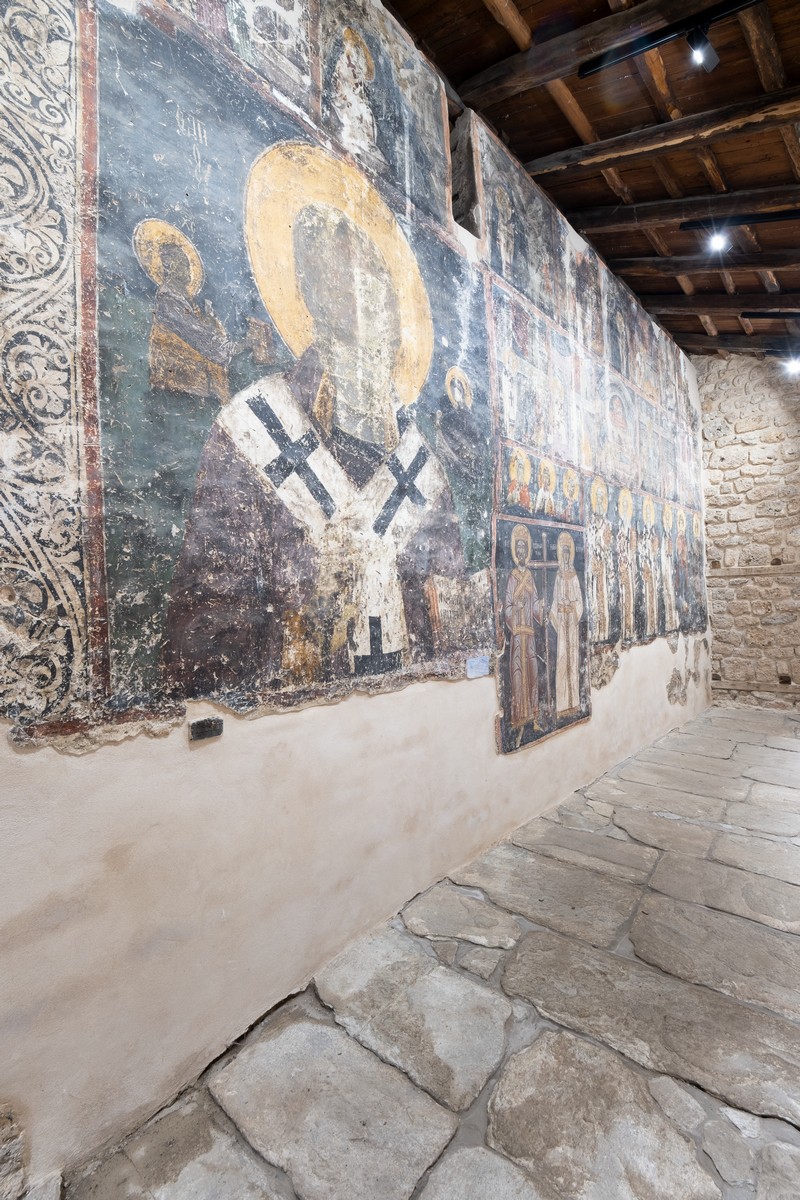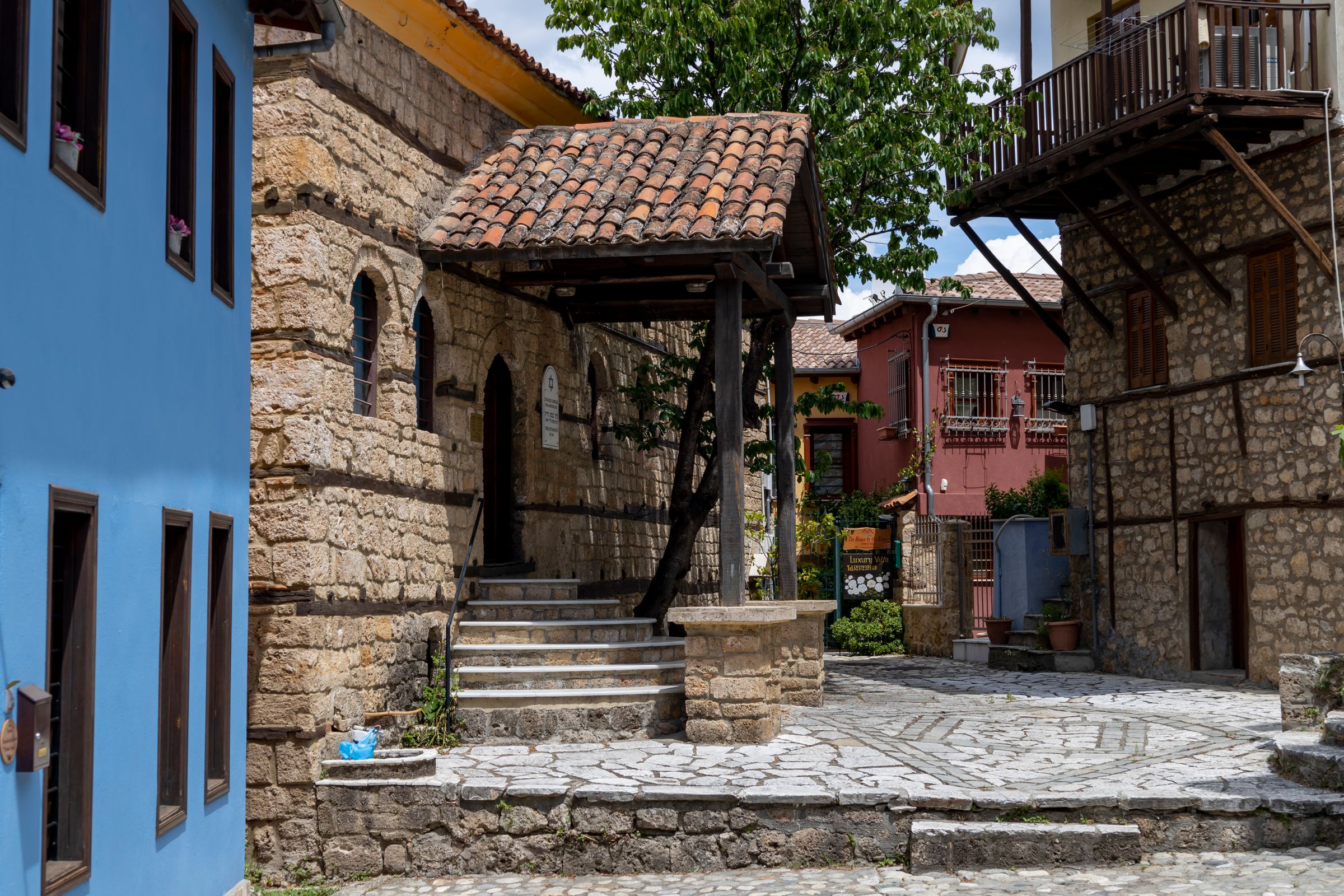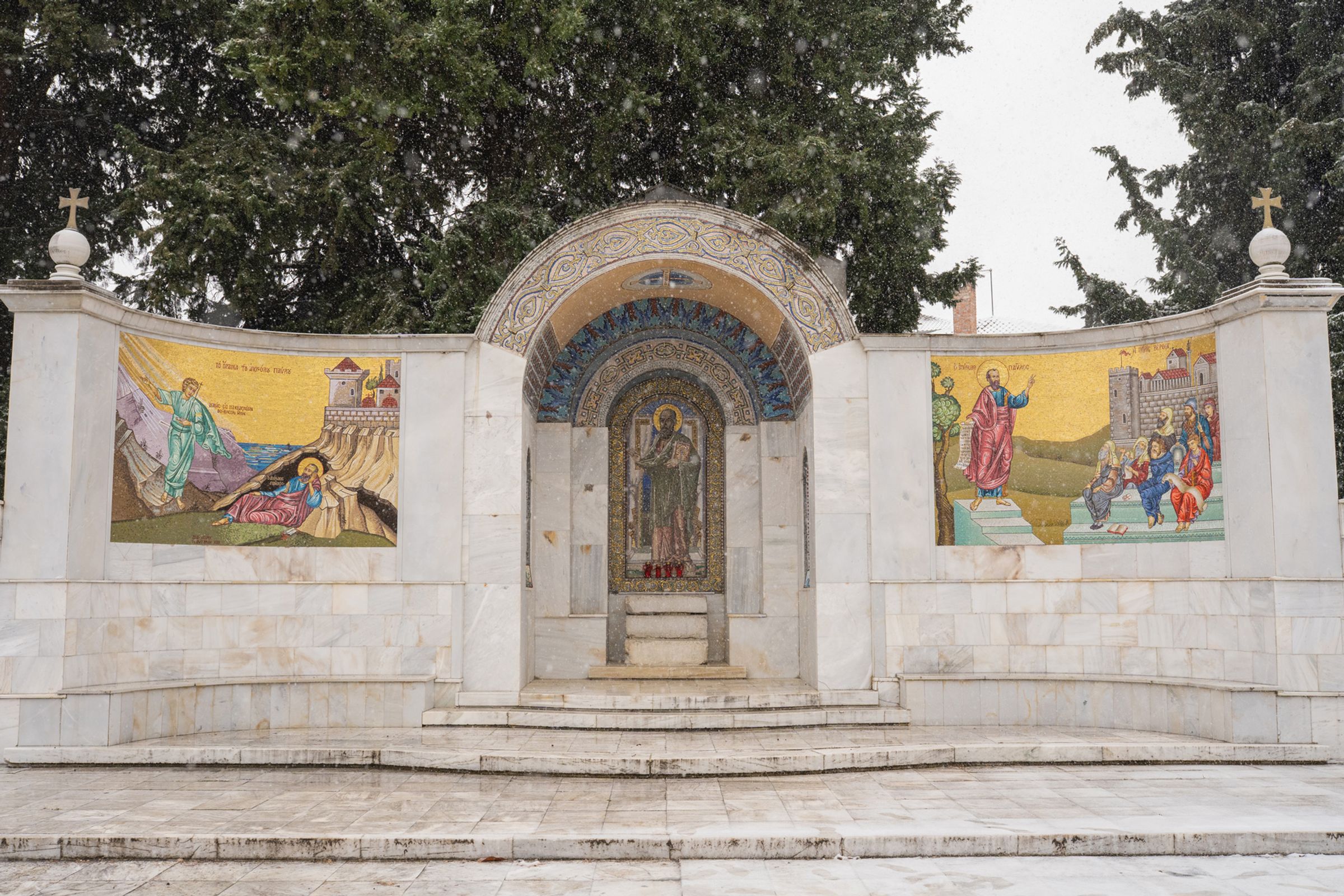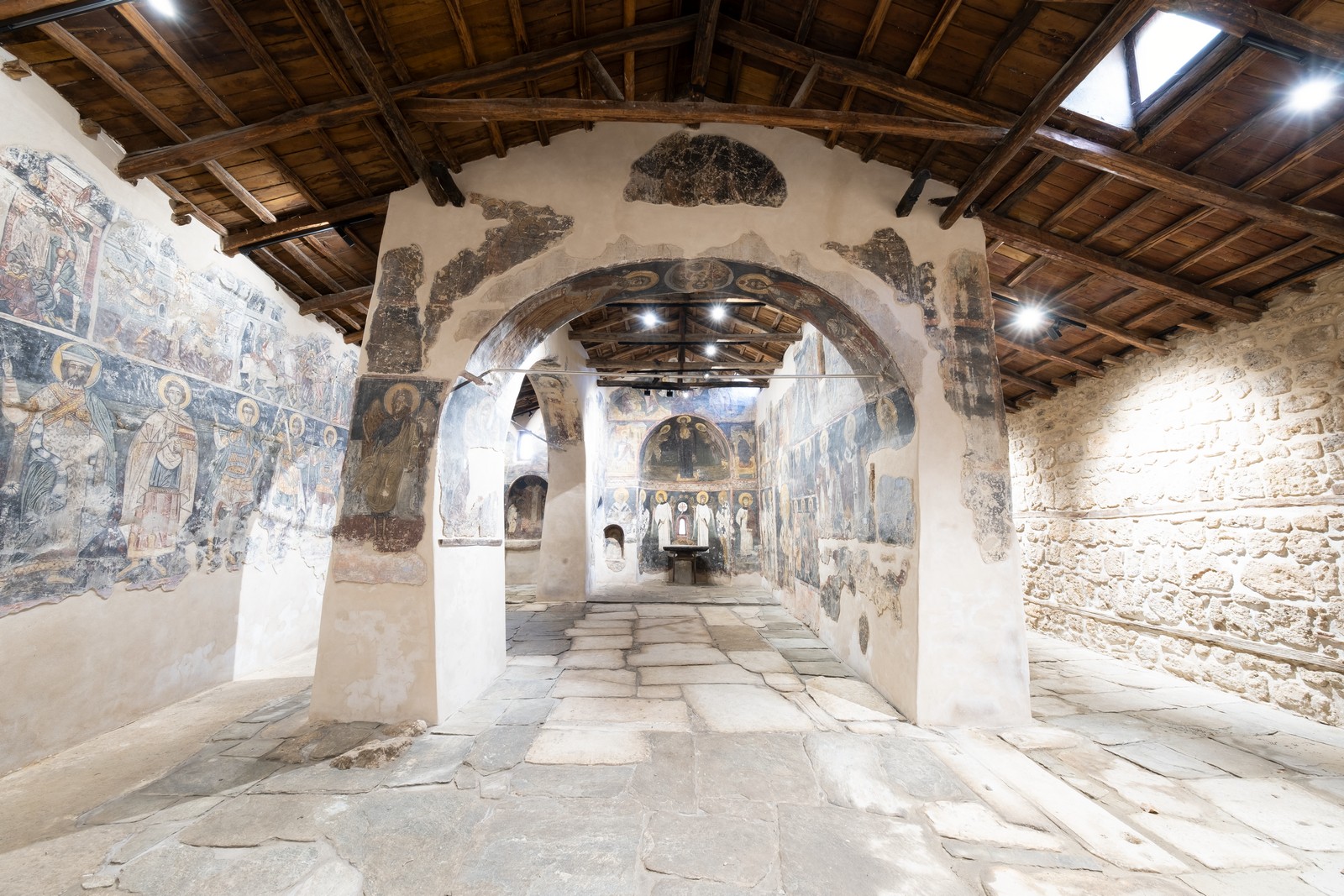
Church of St. Blasius in Veria
Church of St. Blasius in Veria
A 14th-Century Monument
The church, one of the oldest in Veria, dates back to the early 14th century as a single-nave, wooden-roofed basilica.
It was expanded in the 16th century, and frescoes from 1320—such as the Virgin Mary, the Annunciation, and scenes from the life of Saint Blaise—are preserved alongside decorations from the 16th and 18th centuries.


